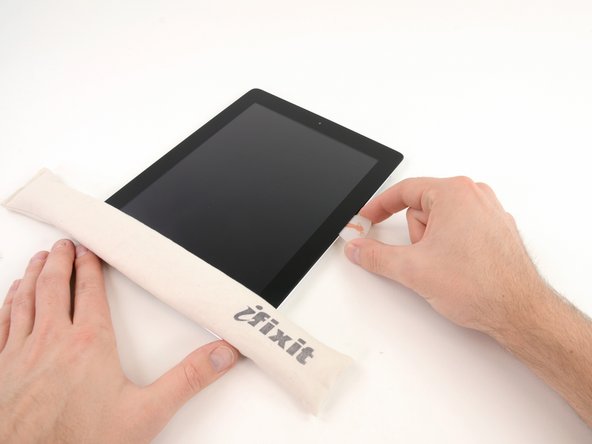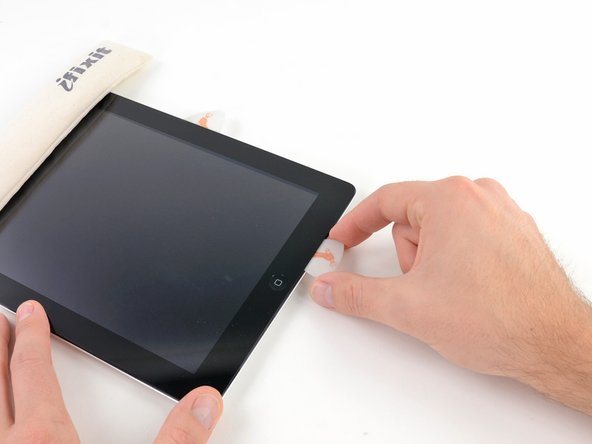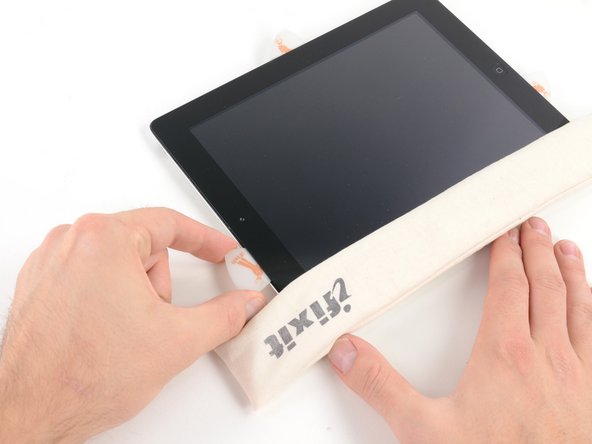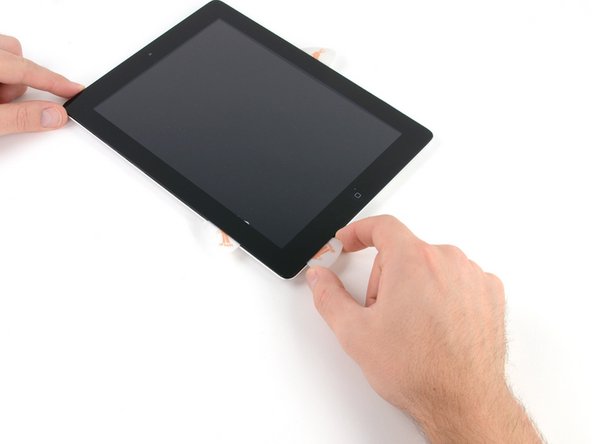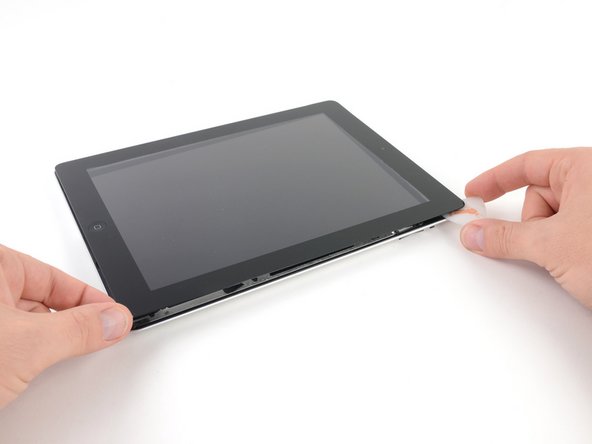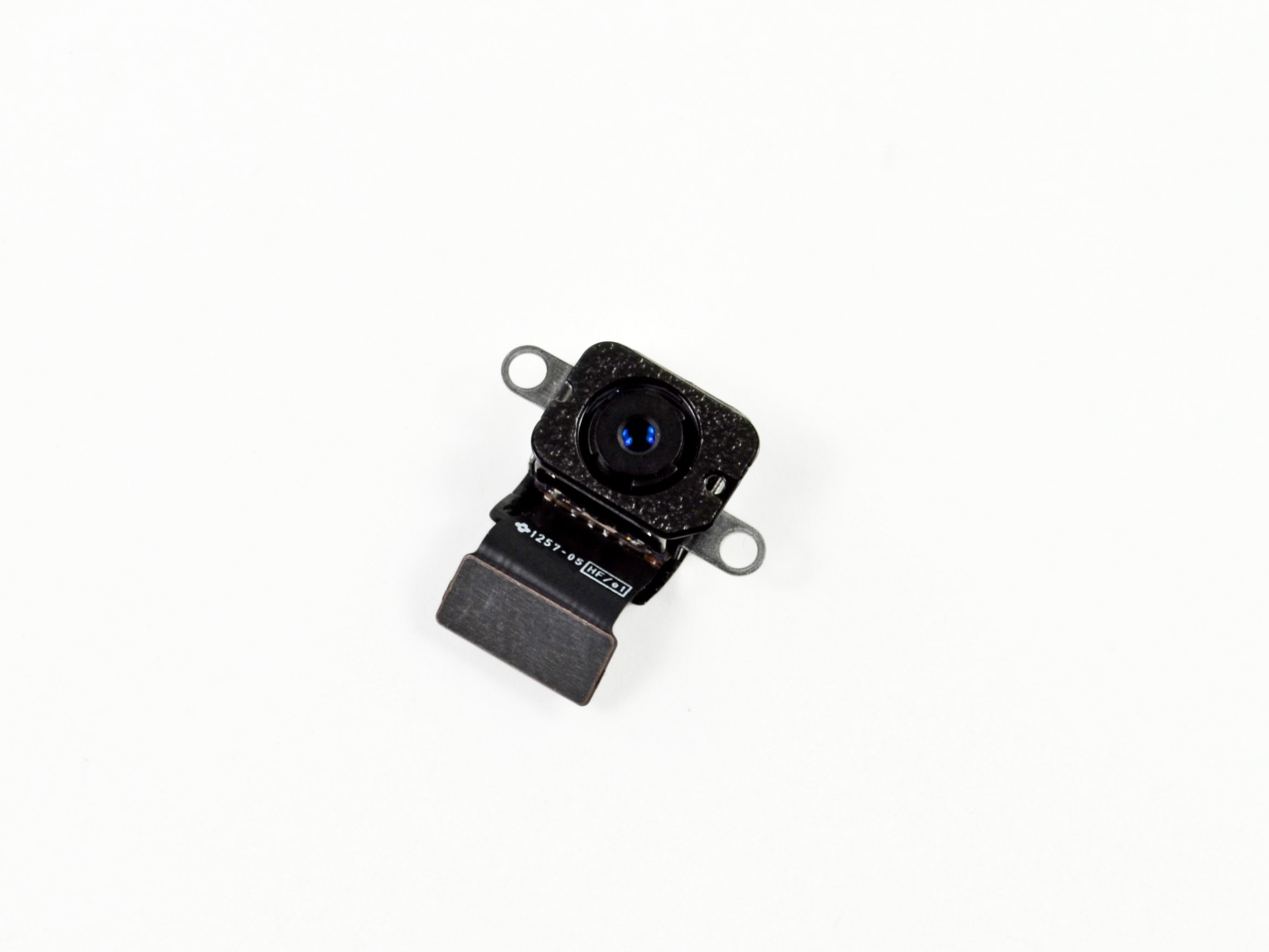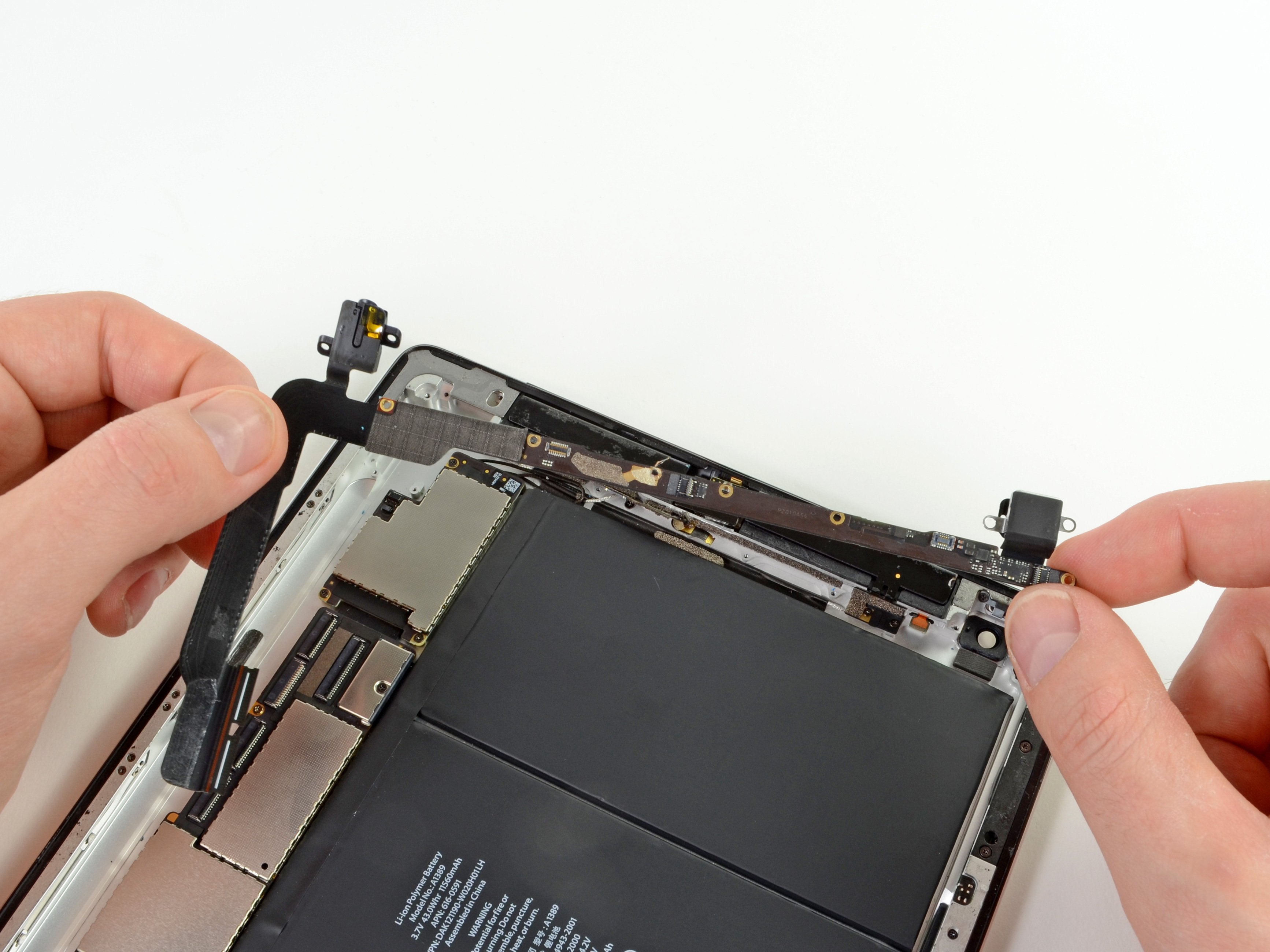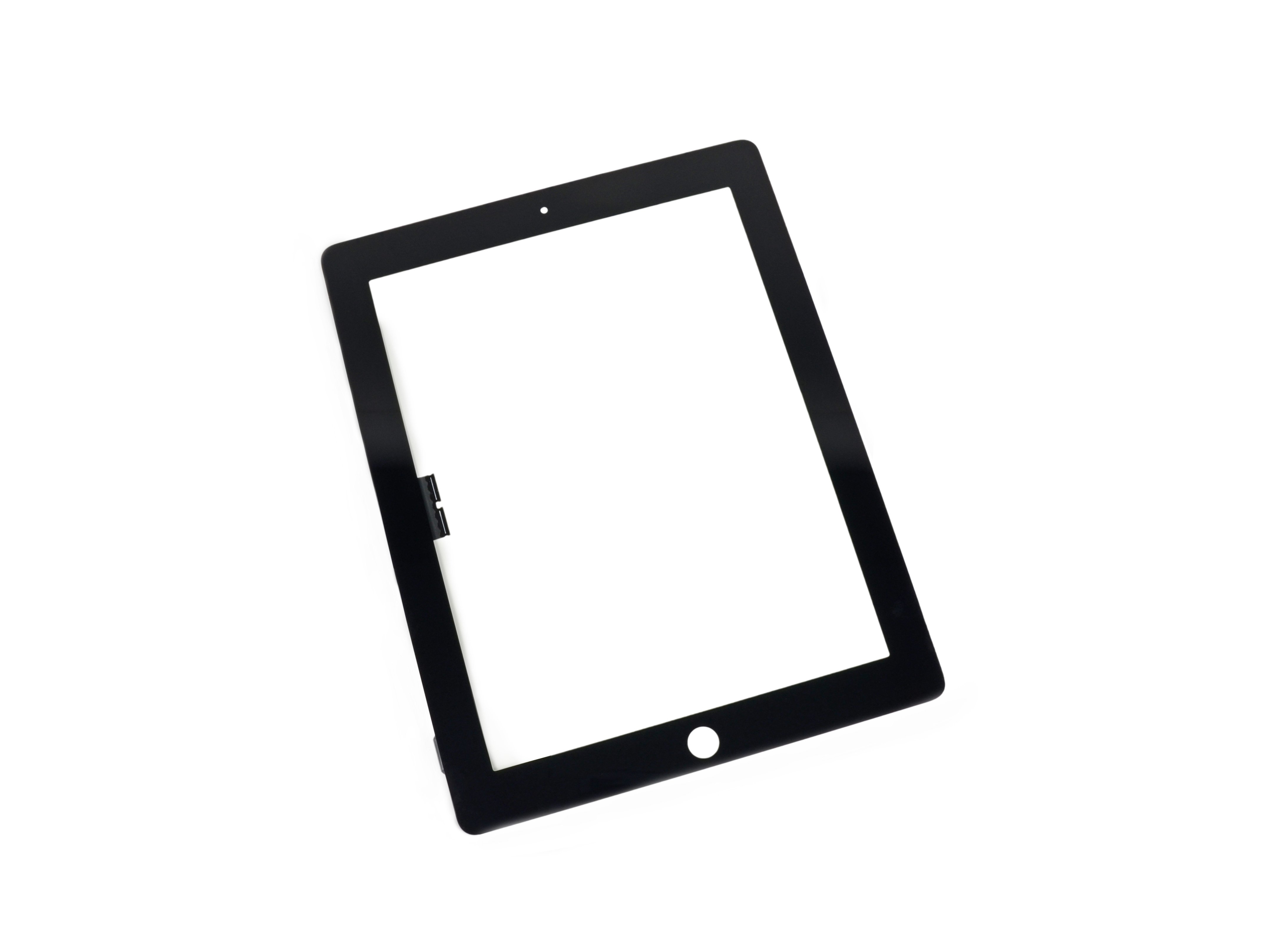iPad 4 GSM Home Button Assembly Replacement
Duration: 45 minutes
Steps: 45 Steps
Follow this guide to swap out the home button assembly from your front panel and get everything back in action. If things get tricky along the way, don't hesitate to schedule a repair for extra support.
Step 1
For carousel microwaves: Double-check that the plate spins smoothly. If your iOpener gets stuck, it could overheat and cause burns, so keep it moving!
Before you dive into the repair, take a moment to give your microwave a quick cleanup. Trust us, you don’t want any leftover gunk on the bottom sticking to the iOpener. A clean start makes all the difference!
- Pop the iOpener right in the center of the microwave. It's the perfect spot to give it that warm-up boost!
Tools Used
Step 2
Keep an eye on the iOpener's temperature during your repair. If it gets too hot, it could burst! Aim to keep it under 100˚C (212˚F) for safety.
If the iOpener looks puffed up, don't touch it! It's best to leave it alone.
If the iOpener's still too toasty to handle, give it a little more time to cool down before giving it another go. A well-heated iOpener should stay warm for about 10 minutes.
The exact time may vary depending on the power of your microwave. You'll know the iOpener is good to go when it's almost too hot to touch—just like that perfect cup of coffee. Be careful though, it's meant to be warm, not a full-on hot tub!
- Give the iOpener a quick 30-second warm-up in the microwave.
- As you work, if the iOpener cools down, just pop it back in the microwave for another 30 seconds to keep things nice and toasty.
Tools Used
Step 3
Heads up! The iOpener gets seriously toasty, so handle it with care. If your hands aren't heatproof, grab an oven mitt to stay safe and comfy.
- Carefully take the iOpener out of the microwave by grabbing one of the flat ends—steer clear of the hot middle to keep your fingers safe!
Tools Used
Step 4
Heads up! The iOpener can get pretty hot, so make sure to grab it by the end tabs only. Safety first, keep those fingers cool!
No microwave? No problem! You can gently warm your iOpener by letting it sit in some boiling water for a bit.
- Grab a pot or pan and fill it with enough water to fully cover your iOpener.
- Bring the water to a rolling boil, then turn off the heat.
- Carefully drop your iOpener into the hot water, making sure it’s completely submerged, and let it soak for 2-3 minutes.
- Use tongs to fish out the heated iOpener from the water—watch out, it’s hot!
- Give your iOpener a good dry-off with a towel so it’s ready to roll.
- Need to warm it up again? Just repeat the boiling and soaking steps for another 2-3 minutes.
Tools Used
Step 5
Pop on some safety glasses to keep those peepers safe, and handle the LCD screen gently to avoid any oops moments.
This keeps any sneaky glass shards from flying everywhere and gives the screen some solid backup while you pry and lift.
- If your display glass is cracked, keep the mess and potential ouchies at bay by taping over the glass before you start.
- Cover the entire iPad screen with overlapping strips of clear packing tape until it’s fully wrapped up.
- Follow the rest of the steps as usual, but heads up: once the glass is cracked, it might keep cracking as you go. You may need to carefully use a metal prying tool to scoop out the broken bits.
Step 6
Heads up! Since you might be handling some shattered glass here, it’s a smart move to pop on some safety glasses to keep those sneaky shards out of your eyes.
- Place the iOpener flat along the right edge of the iPad, making sure it’s nicely smoothed out so it hugs the surface well.
- Let it chill there for about 90 seconds to warm things up before you try popping open the front panel.
Tools Used
Step 7
It might take a bit of elbow grease to slide the opening tool's tip between the glass and plastic. Take your time, stay steady, and gently wiggle the tool back and forth when needed. Patience pays off!
- Spot a tiny gap in the iPad's adhesive ring near the upper right corner, about 2.0 inches (~5 cm) down from the top. This little gap is your secret entry point.
- Line up your tool with the mute button. Gently slip the tip of a plastic opening tool into the gap between the front glass and the plastic bezel. Just nudge the tip in just enough to pry the crack open a bit.
Step 8
- Place the tool carefully between the plastic display bezel and the front panel glass. Precision is key here – just give it a little nudge into the right spot and you're good to go!
Step 9
- Keep the tip of your plastic opening tool snug between the front glass and the plastic bezel, then slide a plastic opening pick into the gap right beside it to gently work things apart.
Step 10
- Gently pull out the plastic opening tool from the iPad, then slide the opening pick a bit deeper under the front glass—aim for about half an inch.
Step 11
- As you carefully loosen the adhesive on the right side of the iPad, give that iOpener a quick zap to heat it back up and place it back on the bottom edge to keep things nice and warm.
Tools Used
Step 12
This adhesive is seriously tough stuff, so you might need to bring some muscle. Take it slow and steady!
If you spot the tip of the opening pick just peeking under the front glass, gently pull it out a little. While it’s totally fine to go this deep, just keep in mind that you might end up with a little adhesive residue on the LCD.
- As the iOpener warms up the bottom edge, start loosening the adhesive along the right edge of the iPad.
- Gently slide your opening pick down the side, carefully freeing the adhesive as you move.
Tools Used
Step 13
You might need to pop the heated iOpener back onto the right edge of your iPad as you peel off the adhesive. How long it’s been cooling down while you worked on it will help you figure out if you need this extra step.
- If the opening pick gets stuck in the adhesive, try 'rolling' the pick along the side of the iPad to keep loosening the adhesive gently.
Tools Used
Step 14
- Before you take out that first opening pick from the bottom corner of the iPad, slide a second pick under the right edge of the front glass to keep that adhesive from sticking back together.
- Warm up the iOpener again, then shift it over to the top edge of the iPad to keep things nice and toasty.
Tools Used
Step 15
The Wi-Fi antenna is secured with screws and a cable along the bottom right edge of the iPad's rear case. Because of its placement, take your time and handle it gently—one wrong move could cause permanent damage to the antenna.
- Heads up: the next steps call for some serious care.
- You’ll need to carefully free the adhesive holding the antenna to the front panel without messing with the fragile parts connecting the antenna at the bottom of the iPad. Take it slow and follow along closely.
Step 16
Keep the pick from sliding past the bottom right corner—going further might mess up the Wi-Fi antenna, and we want to keep things working smoothly!
- Gently slide the opening pick around the bottom right corner of your iPad to loosen the adhesive hanging out there.
Step 17
Take extra care as you slide the opening pick along the bottom right edge of the front panel. The Wi-Fi antenna is tucked in near the corner, and one wrong move could cut it. Be gentle and stay sharp!
Keep the pick gently wedged under the front glass—don’t pull it all the way out. Leave about 1/8" (3 mm) of the tip tucked under to keep things steady and avoid any surprises.
- Gently slide the tip of your opening pick along the bottom edge of the iPad to carefully loosen the adhesive holding down the Wi-Fi antenna. Keep it smooth and steady!
Step 18
- Alright, you're doing great! Once you've passed the Wi-Fi antenna (that's about 3 inches, or 75 mm from the right edge, right next to the home button), gently slide the opening pick back in to its full depth.
- Now, give that pick a little nudge to the right, and it'll release the sticky stuff holding the Wi-Fi antenna to the front glass. Easy peasy.
- The antenna's connected to the bottom of the iPad with screws and a cable, so this step is key to safely detaching it from the front panel. No worries, when you lift the panel, the antenna will stay intact and undamaged.
Step 19
Don't heat the iOpener for more than a minute at a time. Give it a breather for at least two minutes before you heat it up again.
If the adhesive feels a bit chilly along the bottom edge, go ahead and warm up the iOpener again to soften the glue where you're working.
- Carefully continue to release the adhesive along the bottom of the iPad. Gently pull the opening pick far enough to wrap around the home button, then re-insert it to a depth of about 1/2 inch (10 mm) once it's past the button. Take your time and go slow—this part's a bit tricky, but you've got this!
Tools Used
Step 20
When working on iPad 4 models, slide your pick in no deeper than 1/2 inch (10 mm) here to keep that home button ribbon cable safe and sound.
- Keep peeling the adhesive along the entire bottom edge of the iPad like a pro.
- Leave the opening pick tucked under the front glass near the home button to hold your progress.
Step 21
- Pop the iOpener into the microwave for a quick heat-up, then place it on the left side of your iPad. Let the warmth work its magic on that adhesive—things are about to get sticky!
Tools Used
Step 22
If the adhesive has cooled off too much, pop the iOpener back along the top edge and keep going. If your iOpener feels chilly, just heat it up again and you’re good to go.
- Gently slide the opening pick along the top edge of the iPad, nudging it out a bit to navigate around the front-facing camera bracket.
- Heads up: the adhesive here is super stubborn, so you might need to put in some elbow grease. Take it slow and steady to avoid any slips or scratches on yourself or your iPad.
- If the pick starts to get stuck in the adhesive, try "rolling" it as demonstrated in step 9 to keep things moving smoothly.
Tools Used
Step 23
If the adhesive feels toasty enough, go ahead and set the iOpener aside for now. But if it’s still clinging on tight, give the iOpener another warm-up and rest it on the left edge while you keep going.
- Keep peeling back the adhesive along the top edge of the iPad, and carefully slide your opening pick around the top left corner like a pro.
Tools Used
Step 24
The digitizer cable hides out about 2" (50 mm) up from the bottom edge of your iPad. Pause your pick sliding adventure when you hit around 2.25" (60 mm) from the bottom to avoid any surprises.
- Gently slide the opening pick along the left edge of the iPad to lift the adhesive. The adhesive is a little thinner on this side because of the digitizer running along the left edge. Be careful not to push the pick too deep—stay around 10 mm (about half an inch) to avoid messing with the digitizer.
Step 25
The bottom of the digitizer cable is just about an inch (25 mm) away from the bottom of the iPad. Take your time and be extra careful here – we don't want that cable to get accidentally cut. Slow and steady wins the repair race!
- Using the opening pick still resting under the bottom edge of your iPad, gently lift the adhesive at the bottom left corner. It’s like peeling off a sticker – just be careful not to rush!
Step 26
Some of the sticky stuff around the iPad’s edge might have decided to stick back down. If that’s the case, gently slide a pick under the spot where the glass is still hanging on and carefully slice through the adhesive to free it up.
- Grab one of your trusty opening picks and gently wedge it under the bottom right corner of the iPad. Once it’s popped up, snag it with your fingers and you’re good to go!
Step 27
Watch out for any sticky glue hanging on, and carefully use an opening pick to slice through any adhesive still holding the front panel in place.
- Grab the iPad by the top and bottom right corners and gently swivel the front glass away from the device.
- When putting it back together, grab a microfiber cloth and some compressed air to give the LCD a nice clean sweep—no dust or fingerprints allowed before you snap the glass back on.
Step 28
The bottom left screw is hidden behind the home button ribbon cable connector. Gently move the ribbon cable out of the way to access and remove that sneaky screw!
- Unscrew the four tiny 2 mm Phillips #00 screws that are holding the LCD onto the aluminum frame. You got this!
Step 29
Handle that LCD with care! The ribbon cable is a bit delicate, so avoid bending it too much or you might end up with a broken connection. Take it slow and steady!
- Grab a plastic opening tool or spudger and gently pry up the right edge of the iPad's LCD.
- Carefully swing the LCD open along its left side and rest it face-up on top of the front glass panel.
Tools Used
Step 30
- Gently use the spudger's tip to lift up the tape that’s keeping the LCD ribbon cable connector in place. Take your time – it’s a simple step, but a crucial one!
Tools Used
Step 31
- Gently flip up the little flap holding the LCD ribbon cable ZIF connector in place.
- Carefully wiggle the LCD ribbon cable free from its socket on the logic board using your fingers or tweezers.
- If the LCD screen doesn’t light up after reconnecting the ZIF cable, try a force restart by holding down both the power and home buttons for about ten seconds until the Apple logo shows up.
Tools Used
Step 32
- Carefully lift the LCD away from the front panel—just don’t touch the screen side!
Step 33
If you spot some electrical tape hiding the Wi-Fi antenna, speaker cable, and home button ribbon cable, go ahead and peel it off carefully.
Step 34
- Gently lift the little flap holding down the home button ribbon cable connector to unlock it.
Step 35
- Grab some tweezers and carefully pull the home button ribbon cable straight out from its socket on the logic board.
Tools Used
Step 36
- Gently lift and slide the home button ribbon cable out from its snug spot in the rear case.
Step 37
- Grab the tip of your spudger and gently peel back the tape holding the digitizer ribbon cable to the logic board. Just take your time and go slow—it's all about finesse here!
Tools Used
Step 38
- Gently lift the little flap holding down each digitizer ribbon cable in its ZIF connector.
Step 39
- Gently wedge the flat end of your spudger under the digitizer ribbon cable to carefully break up the adhesive holding it down.
- Pull the digitizer ribbon cable straight out from its connectors on the logic board without twisting or bending.
Tools Used
Step 40
- Gently peel back the digitizer ribbon cable, then use the flat end of a spudger to carefully pop loose the adhesive holding that cable down to the rear aluminum case.
Tools Used
Step 41
- Gently pull the digitizer ribbon cable out of its cozy little spot in the aluminum frame using your fingers. Be careful not to rush it!
- Now, go ahead and lift off the front panel from the iPad. It should come off smoothly – no force needed!
Step 42
Don't let the iOpener get too hot! Give it a little break—at least two minutes—before you heat it up again. Your repair will thank you for it.
The home button assembly is glued to the front panel, and it's best to warm things up a bit with an iOpener to loosen that adhesive. Trust us, it'll make your life easier!
- Pop the iOpener into the microwave and heat it up for one minute at full power (or just thirty seconds if you’re working with the newer gel-filled iOpener).
- Set the warm iOpener right on top of the home button along the front edge of the screen.
Tools Used
Step 43
- Gently lift the home button ribbon cable away from the front panel with care.
Step 44
- Slide the plastic opening tool under the right side of the home button assembly and gently pry upward to break free the adhesive on that side.
- Repeat the same clever move on the left side to release its adhesive grip.
- Carefully lift the home button mount off the front panel and set it aside.
Step 45
- Carefully slide the edge of your plastic opening tool under the home button mounting bracket.
- Gently glide the tool along the retaining spring bracket to loosen up that stubborn adhesive.
- Lift out the home button along with its mounting bracket from the front panel like a pro.
























